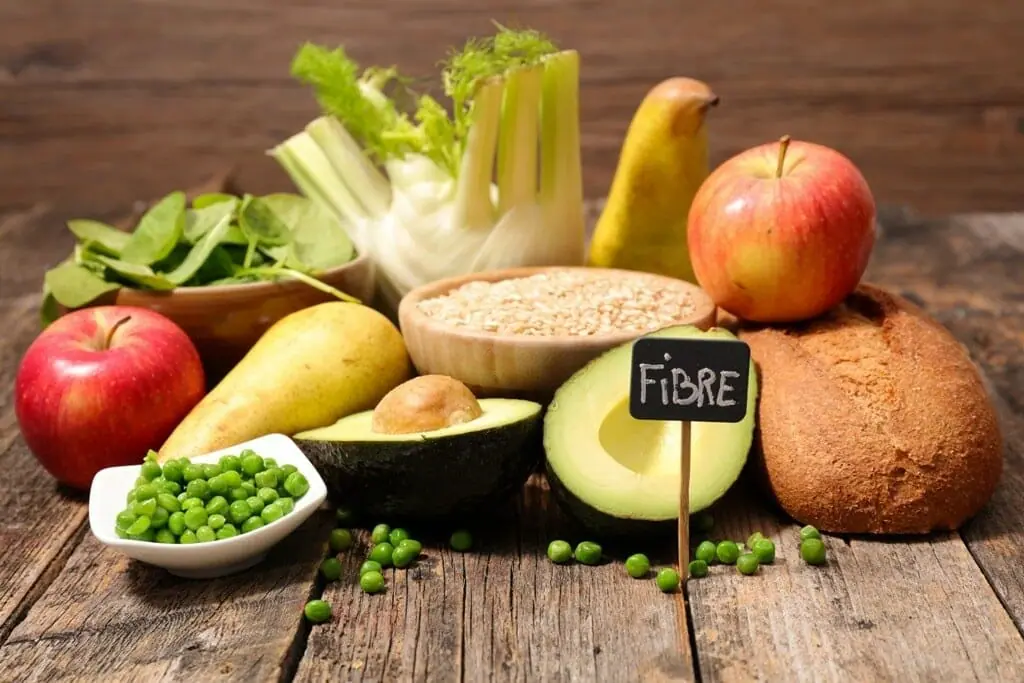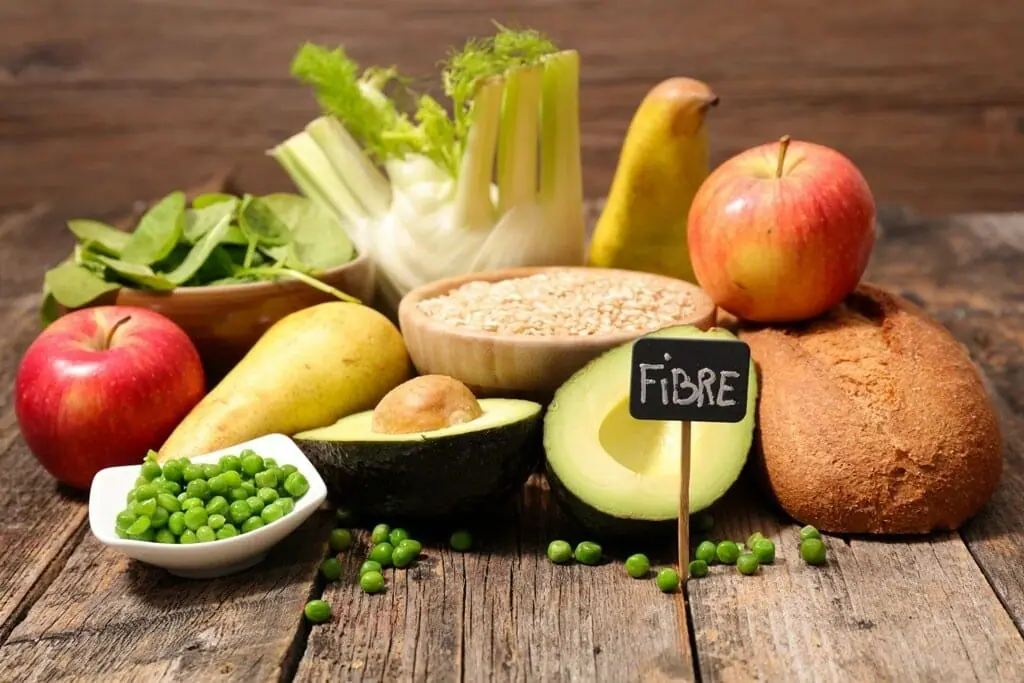We all know that we should be eating more fibre. But what is fibre, exactly? Let’s find out!
Foods are made up of three macronutrients: fat, protein and carbohydrates. Each macronutrient can be further divided into types: for example, fat can be trans fat, saturated fat and unsaturated fat.
Fibre is a type of carbohydrate.
Most carbohydrates are broken down into sugar (glucose) and used as energy by our body. However, fibre is a form of carbohydrate that the body is unable to break down and digest. It’s mostly made of cellulose from plants.
Because it can’t be broken down, fibre isn’t a source of energy for your body. What it does do, however, is help everything else move through your digestive tract and keep your gut healthy.
Fibre can also slow down the break down of other carbohydrates. For example, if you eat a simple sugary syrup without anything else, your body can break this down into glucose extremely quickly, causing a ‘sugar spike’. However, if you drizzle that sugary syrup on something with a lot of fibre, for example porridge oats, it increases the amount of time it takes to break down the syrup and creates a slower release of energy.
Low carbohydrate diets are currently popular. Decreasing the amount of sugar and refined carbs that we eat is almost certainly a good idea. However, fibre is essential for human health. This is why a lot of low-carb diets have switched to counting ‘net carbs’ instead of total carbs.
Net carbs are calculated by subtracting the fibre content from the overall carb count, effectively meaning that carbs from fibre don’t ‘count’ towards your overall daily goal.

What is fibre? Soluble and insoluble fibre and resistant starch
Fibre is a type of carbohydrate that cannot be broken down by your body. But it can also be further divided into types.
Soluble fibre dissolves in water. This is broken down by your gut and becomes food for bacteria in your intestines–this bacteria forms your microbiome and is essential for good gut health. Soluble fibre softens your poo, to make it easier to pass.
Insoluble fibre doesn’t dissolve in water. It cannot be broken down by the gut, but it does help to push food through your digestive system and adds bulk to your poo.
Resistant starch is a type of starch that is classified as fibre as it doesn’t break down in the small intestine, but instead ferments in the large intestine and becomes food for our gut bacteria. It promotes a healthy microbiome.
You don’t need to worry too much about the different types unless you’re a food scientist 😉
Instead, focus on eating a diet with plenty of vegetables, fruit, legumes and beans, and wholegrains. Healthy eating doesn’t have to be complicated!
You keep talking about the microbiome…
There will be more posts about the microbiome soon! But in brief, we’re all filled with beneficial microbes, including bacteria and fungi. This microbiome is currently the subject of a lot of intense scientific research, as it plays a huge part in keeping us healthy and well.
You have a unique microbiome, that’s the product of your environment, diet, and DNA. It plays a role in everything from regulating your mood to protecting you from disease–and it’s heavily influenced by what you eat.
Fibre is a key element of a healthy diet, because it supports our microbiome!
Fibre is essential for health
Eat a high-fibre diet to lower your risk of heart disease, diabetes, diverticulitis and breast cancer as well as to prevent constipation and promote weight loss.
Yes: there is no doubt that fibre is good for us! But if you are wondering how much fibre you should be eating each day I discuss various recommendations in this post!
